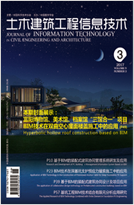2015, 7(1): 103-110.
BIM在澳大利亚工料取量行业应用现状及经验
墨尔本大学设计学院,澳大利亚 VIC3010 |
Status of BIM Adoption and the BIM Experience of Cost Consultants in Australia
School of Design, The University of Melbourne, Australia VIC3010 |
引用本文:
阿基巴德·埃比努, 苏达·万卡塔史(原著). BIM在澳大利亚工料取量行业应用现状及经验[J]. 土木建筑工程信息技术,
2015, 7(1): 103-110.

Citation:
, . Status of BIM Adoption and the BIM Experience of Cost Consultants in Australia[J]. Journal of Information Technologyin Civil Engineering and Architecture,
2015, 7(1): 103-110.

摘要:研究表明Building Information Modeling (BIM)的使用正日益增多,然而,BIM在工料取量(Quantity Survey)行业中得到何种程度的应用还没有很清楚的结论。因此,本文旨在研究澳大利工料取量行业中BIM应用的现状和经验,进而了解他们在应用BIM技术特性方面所取的进展。本研究所收集的数据是通过对180家工料取量公司进行网上问卷(其中40家得到有效回复)和对两家公司深入访谈得到的。研究发现BIM并没有很广泛地被工料取量公司采用,主要基于以下原因:由设计者发布的三维(3D)模型可靠性不能得到保证;BIM模型所含信息的不完全性;缺乏对应用BIM的新业务流程的了解;客户需求不足;以及在应用BIM新技术过程中产生的学习成本。目前看来,大多数公司都有在计算机辅助下通过二维图纸,成本计划及工程量清单对项目进行工料估算的经验,但是他们很少有使用三维BIM模型进行工料自动计算,而目前三维模型也大多只用于可视化演示方面。在很多基于BIM的项目中,工料取量公司一般不会得到设计者发布的BIM三维模型,相反,多是通过二维图纸进行工料和造价估算。在一些使用三维模型进行自动估价的项目中,也没有明确地显示出能节省时间成本,相反,造价师在估算前在验证三维模型完整性及工料分类上反而花费了更多的时间。同时,在没有一个全行业的对建筑施工项目的进行标准化编码的前提下,工料取量师也缺乏转换到五维(5D)BIM进行造价估算的动力。最后,为解决此困境,本文提出了在工料估价领域推广BIM应用的一些具体措施,供业界参考。
Abstract: There is anecdotal evidence that the adoption of building information modeling (BIM) is on the increase. However, the extent to which quantity surveyors (QS) (also referred to as cost consultants or cost engineers) are now using BIM features is not clear. The research reported in this paper was aimed at understanding the BIM experience of QS firms and cost consultants in Australia as well as to understand the progress they have made towards the use of BIM features. Data collection was a web-based survey of 180 QS firms with 40 responses and two in-depth interviews. Findings from the study show that BIM features are not readily used by QS firms owing to uncertainties concerning the integrity of three-dimensional (3D) models issued by designers, incomplete information in models, lack of knowledge concerning new business processes to drive the use of BIM use, lack of demand by clients, cost of implementing BIM features within the existing practice and learning time required to adopt BIM features. It appears that most of the firms have experience in computer aided take-off with twodimensional (2D) drawing in the project's front end tasks such as cost planning and bill of quantities. Most of them have little experience with automated extraction of quantities using 3D models. Only one experience the use of BIM features in contract administration duties. 3D computer-aided drawing (CAD) drawings are used only for visualization. In many BIM-based projects reported, cost consultants were not issued the 3D BIM developed by designers; instead, 2D drawings were issued to the QS for quantity take-off and cost estimation. In cases where automatic quantity extraction was performed using 3D models, there seems to be lack of clarity concerning the time savings achieved because the QS spent more time checking the accuracy of the 3D model prior to quantity extraction as well as sorting, and splitting take-off items. In the absence of trust in the integrity of 3D models, QS would prefer to use the manual on screen take-off using 2D drawings and 3D for visualization. Also, in the absence of industry-wide standard for classifying, and coding construction works, QS would have no incentive to switch to five-dimensional (5D) BIM estimating. Ways of increasing the use of BIM features by QS are highlighted.
计量
- PDF下载量(21)
- 文章访问量(1430)
- HTML全文浏览量(799)















